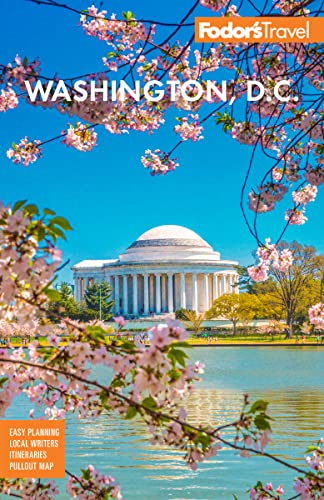Georgetown Walk
Georgetown can be thought of in four sections: the marketplace along M Street, the university, the historic residential neighborhoods, and the waterfront. The most crowded stretches are along M Street and Wisconsin Avenue. The quietest strolls are through Georgetown University's campus. The neighborhood can be comfortably explored in an afternoon, though you may want to linger here. The waterfront with its C&O Canal, a sylvan spot for a bike ride, a morning jog, or a pleasant paddle, as well as the riverfront restaurants and parks at Washington Harbour on the Potomac, offer an array of possibilities.
M Street is a fitting introduction to the area that is known for its high-end clothing boutiques and fancy furniture shops, now squeezing cheek-by-jowl with chain stores such as J. Crew, H&M, and Zara. You might see a crowd lining up to buy Georgetown Cupcakes, the site of the reality show DC Cupcakes. Slightly out of place amid the modern shops and cafés, the 18th-century Old Stone House and garden on M Street are thought to be the oldest in the city.
Residential Georgetown and GU
Leaving the throngs behind for now, 31st Street takes you north into the heart of residential Georgetown, where impossibly small cottages stand side by side with rambling mansions. At Q Street, Tudor Place was once the home of Thomas Peter, son of Georgetown's first mayor, and his wife, Martha Custis, Martha Washington's granddaughter. A house tour lets you see many of Martha Washington's Mount Vernon possessions, as well as a 1919 Pierce Arrow roadster.
Farther up 31st Street, the 10 acres of formal gardens and English parkland that make up Dumbarton Oaks can rightfully claim to be one of the loveliest spots in Washington, D.C. To the east, Montrose Park entertains kids, dogs, and picnickers with wide lawns, tennis courts, and a playground. The funerary obelisks, crosses, and gravestones of Oak Hill Cemetery mark the final resting place for actor, playwright, and diplomat John H. Payne, and William Corcoran, founder of the Corcoran Gallery of Art (now the Corcoran Contemporary – National Gallery of Art). A short detour east on Q Street, Dumbarton House (no relation to Dumbarton Oaks) is a distinctive example of Federal-era architecture and furnishings.
Circling back, Wisconsin Avenue leads downhill past a variety of small boutiques and cafés toward the intersection with M Street. Instead of following it the whole way, make a right on O Street, where you will find St. John's Church, one of the oldest churches in the city. Thirty-third Street brings you down to N Street to see some of the finest Federal-era architecture in D.C. Cox's Row is a group of five Federal houses, between Nos. 3339 and 3327 N Street, named after Colonel John Cox, a former mayor of Georgetown who built them in 1817.
N street gives way to Georgetown University. Founded in 1789, it is the oldest Jesuit school in the country. The imposing, Victorian Healy Hall at its entrance was named for Patrick Healy, the president of Georgetown University in 1873, who was the biracial son of a slave and a white Irish slave owner.
Turn left at 36th Street to return to M Street, perhaps via the undeniably spooky 75 steps that featured prominently in the horror movie The Exorcist. Find them past the old brick streetcar barn at No. 3600. Down on the western end of M Street, the small Francis Scott Key Memorial Park honors the Washington attorney who penned the national anthem during the War of 1812. This is a good spot for a picnic; for supplies, cross the street for sandwiches at Cafe Tu-o-Tu Express and pick up a sweet or savory pie by the slice at Pie Sisters. Or, you might be tempted to seek out Kafe Leopold at the end of Cady's Alley and linger on its shady terrace. Flanking the southern edge of the park is the C&O Canal, which links the Potomac with the Ohio River. A sandy red path along the bank makes for a scenic walk or bike ride—look out for great blue herons and turtles lounging in the sun. Two miles west of the Key Bridge along the canal towpath, Fletcher's Boat House rents kayaks, canoes, and bikes. You can also follow the canal east through the heart of Georgetown, running parallel with M Street.
M Street and the Waterfront
Whether you follow the canal or M Street as you head east back through Georgetown, you will eventually come to Washington Harbour. On the way, you may want to explore the busy area around the intersection of M Street and Wisconsin Avenue. The small Museum of Contemporary Art, a converted 1850s warehouse, is located in Canal Square. A short detour down Wisconsin Avenue will take you to Grace Episcopal Church, the church of choice for many 19th-century residents. You might want to make another short detour east to Thomas Jefferson Street for a stop for homemade tea and cakes at the fun and funky Baked and Wired. Then head south on 31st Street toward the Potomac to take a rest on a bench under the trees in the Georgetown Waterfront Park.
Following the Potomac east to K Street between 30th and 31st streets you will find Washington Harbour, a riverfront development specializing in restaurants and bars with scenic views of the river, the Watergate complex, and the Kennedy Center. Boat trips to Mount Vernon, the National Harbor, and Alexandria leave from here, offering a waterfront perspective of the city’s monuments.
By night the hungry, thirsty, and the ready to party pound the pavement on this side of D.C. with its assortment of Vietnamese, Thai, Middle Eastern, and Ethiopian restaurants as well as a variety of grubby pubs. After hours, college students and recent graduates overrun the bars, but a few lounges do cater to a more mature, upscale crowd.




